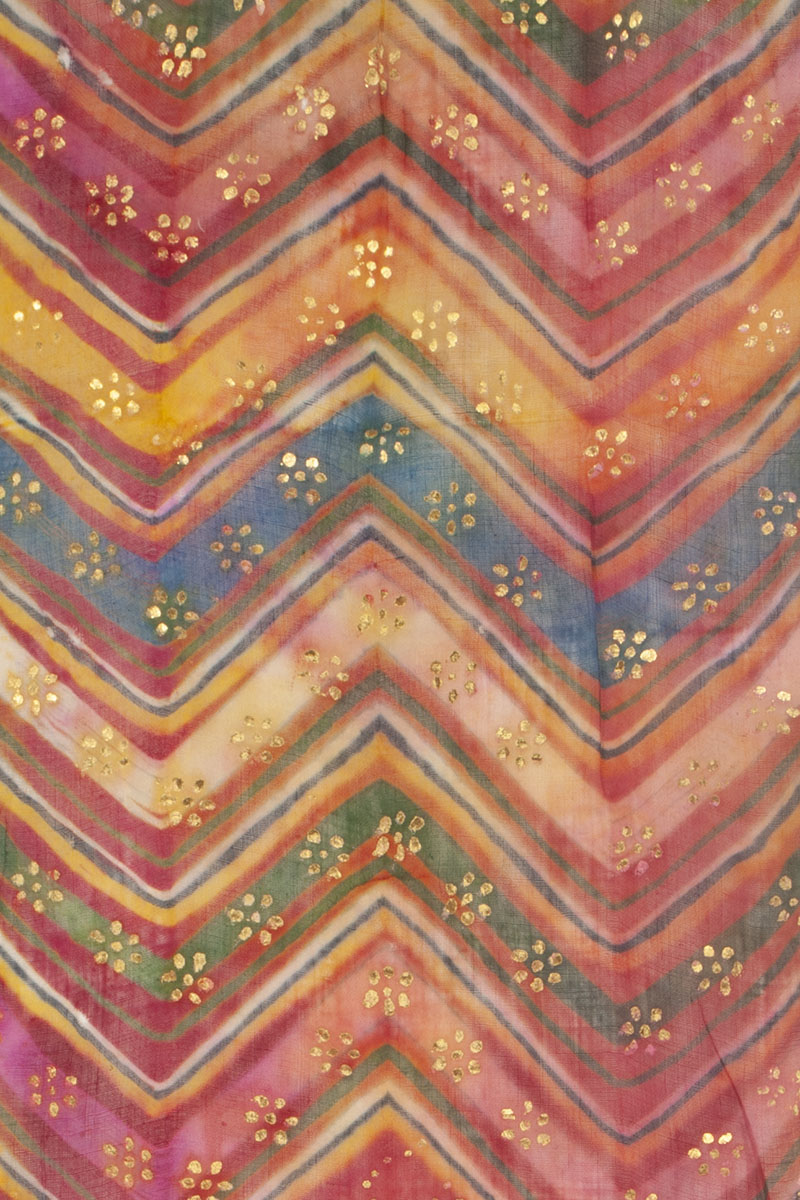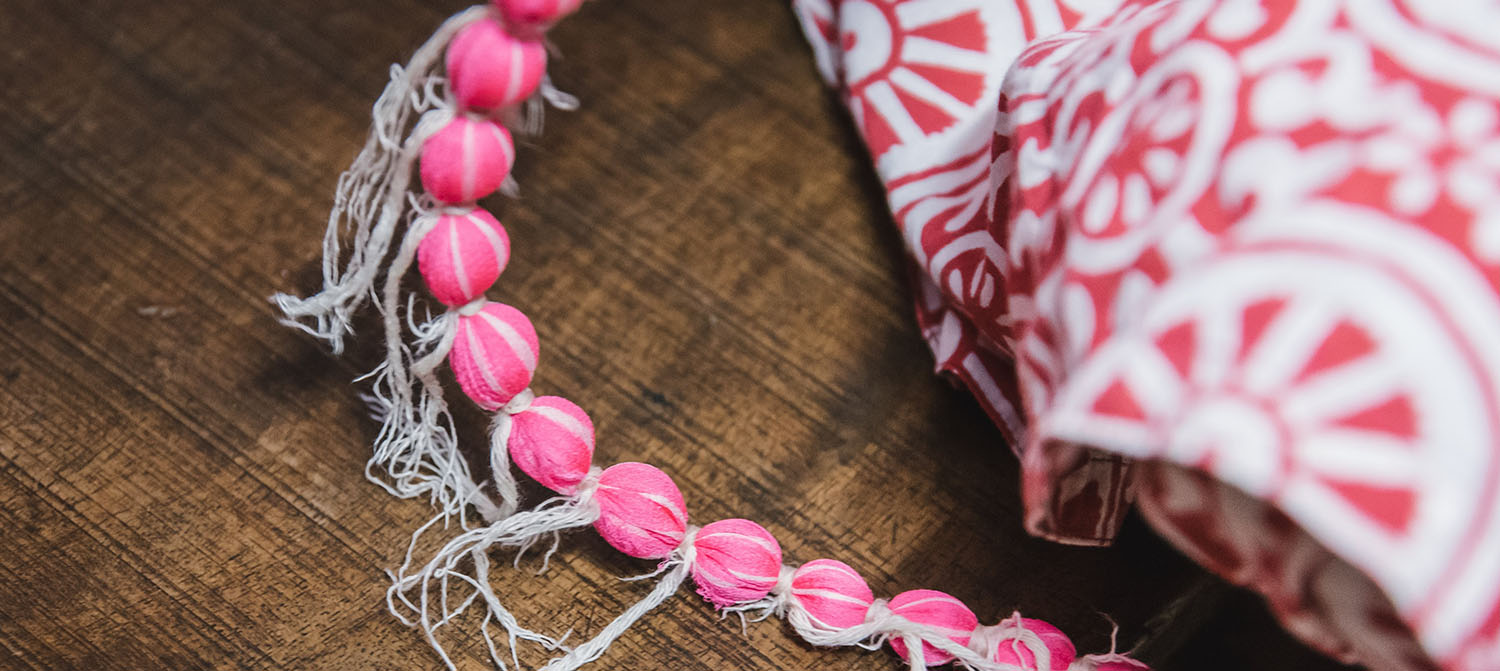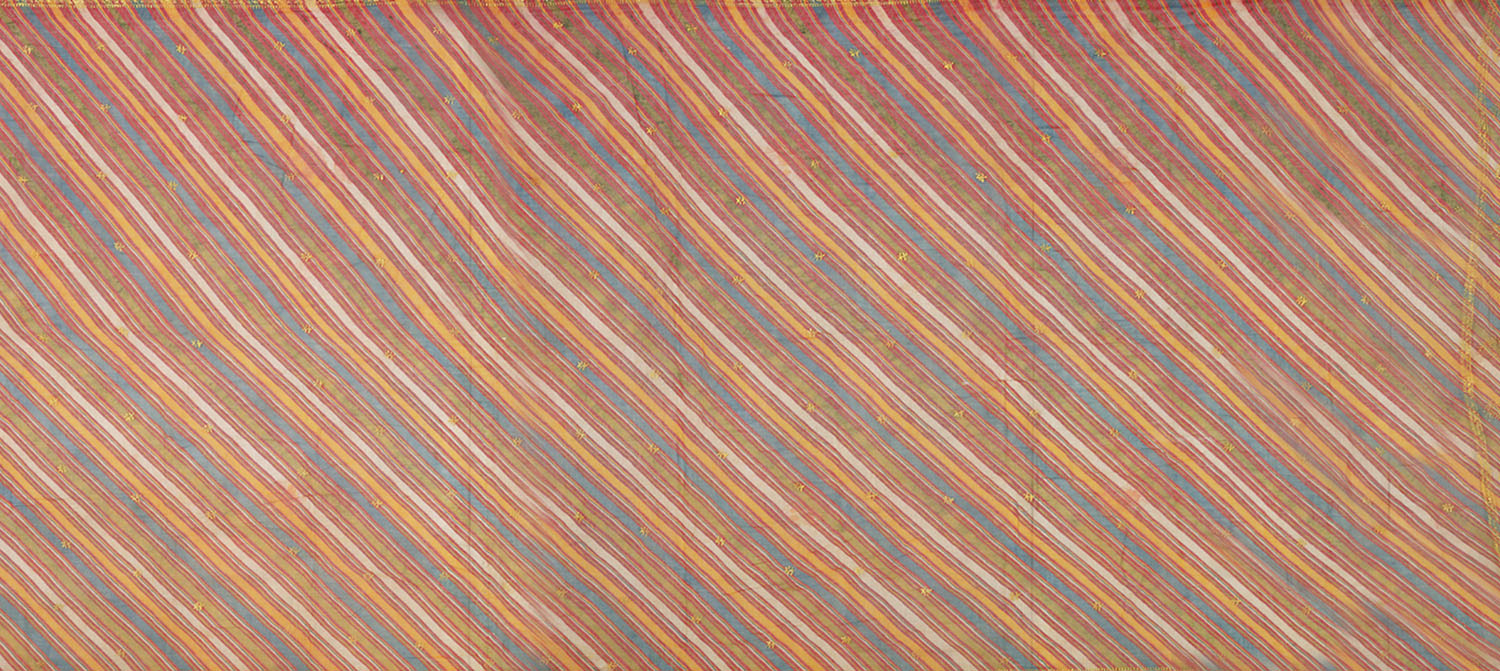ARTICLE
Leheriya
Fugitive dyes, also known as kuccha dyes, are used in leheriya, so that the excessive dye may be easily discharged, leaving clean lines in the pattern. If multicoloured stripes are required, some of the ties may be opened for further rounds of dyeing, while others may be reserved accordingly. Once a diagonal pattern is completed, a second diagonal pattern may be created using the same process mentioned above. For this, the fabric is unrolled and tied from corner to selvedge in the direction opposite to the first pattern, resulting in a design that features two diagonal stripes crossing each other. This process creates the pattern of mothra, the name given to the small rectangular spaces where the diagonal stripes intersect, which has been inspired by moth, a type of lentil. Striped leheriya patterns are called salaidar, while chevron patterns are known as gandadar. A finished leheriya textile can also be embellished by khari work (not to be confused with khadi, the handwoven cotton fabric), where metallic dust is applied onto a motif that has been stamped with an adhesive on the cloth.
Tie-dyed textiles, including leheriya, have deep cultural significance in Rajasthan and are worn on special occasions. Women wear leheriya odhanis and sarees for the spring festivals of Holi and Gangaur, as well as the monsoon festival of Teej. Red or pink safas are typically worn by males on these festivals and on special occasions such as weddings, while a safa with the mothra pattern is traditionally worn during periods of mourning.
Bibliography
Our website is currently undergoing maintenance and re-design, due to which we have had to take down some of our bibliographies. While these will be re-published shortly, you can request references for specific articles by writing to hellomapacademy@map-india.org.










